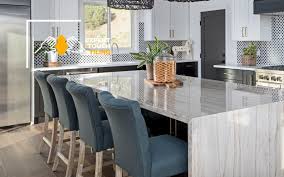In the realm of industrial materials, transparent polyethylene sheets may not always steal the spotlight, but they play a vital role in various applications across industries. These unassuming sheets of plastic offer a wide range of benefits, from versatility and durability to cost-effectiveness. In this blog post, we’ll explore the world of transparent polyethylene sheets, their applications, and the advantages they bring to the table.
What is Transparent Polyethylene?
Transparent polyethylene is a thermoplastic polymer that is derived from the monomer ethylene. It’s known for its transparency, flexibility, and excellent chemical resistance. These sheets are typically manufactured using a process called extrusion, which allows for precise control over thickness and transparency levels.
Applications Galore
Greenhouse Coverings: Transparent polyethylene sheets are often used as greenhouse coverings. Their excellent light transmission properties enable optimal plant growth by allowing sunlight to penetrate while protecting plants from harsh weather conditions.
Retail Displays: In the retail industry, these sheets are used to create product displays, signage, and protective barriers. Their transparency allows for high visibility of products, making them ideal for showcasing merchandise.
Construction and Renovation: Transparent polyethylene sheets are used as temporary enclosures during construction or renovation projects. They provide protection from dust, debris, and adverse weather conditions while allowing natural light into the work area.
Agriculture: In agriculture, these sheets are used for mulching, creating low tunnels, and covering crops to protect them from pests and extreme weather conditions. They can also be used for pond liners and irrigation channels.
DIY Projects: Homeowners and DIY enthusiasts often use transparent polyethylene sheets for a wide range of projects, from creating protective covers for furniture to making custom windows for greenhouses or sheds.
Advantages of Transparent Polyethylene Sheets
Transparency: As the name suggests, one of the primary advantages is their transparency. This property allows for natural light to pass through, reducing the need for artificial lighting in covered areas.
Durability: Transparent polyethylene sheets are resistant to moisture, chemicals, and UV radiation, making them suitable for both indoor and outdoor applications. They are also less prone to tearing compared to traditional plastic sheets.
Cost-Effective: These sheets are often more cost-effective than glass, making them a budget-friendly option for various applications.
Lightweight: They are lightweight and easy to handle, making installation and transportation hassle-free.
Customization: Transparent polyethylene sheets are available in various thicknesses and sizes, allowing for customization to suit specific project requirements.
Recyclable: Many transparent polyethylene sheets are recyclable, contributing to sustainability efforts in the industry.
Environmental Sustainability
In an era when environmental sustainability is a top priority for many, transparent polyethylene sheets have their merits. Many manufacturers now produce these sheets using recycled materials or offer options that are fully recyclable. This not only reduces waste but also aligns with eco-friendly initiatives. Additionally, their lightweight nature translates to reduced transportation costs and lower carbon footprints.
UV Resistance
Transparent polyethylene sheets are renowned for their ability to withstand ultraviolet (UV) radiation. This makes them ideal for outdoor applications where prolonged exposure to sunlight is expected. Whether it’s protecting outdoor equipment, creating durable signs, or constructing temporary outdoor structures, these sheets maintain their transparency and structural integrity over time.
Easy Maintenance
Maintenance is often a critical consideration in choosing materials for various projects. Transparent polyethylene sheets require minimal upkeep. Cleaning them is as simple as using mild soap and water, and they’re less susceptible to staining or corrosion compared to other materials like glass. This ease of maintenance is particularly advantageous in applications where cleanliness and appearance matter.
Versatile Thickness Options
Another advantage of transparent polyethylene sheets is the availability of various thickness options. Whether you need a thin, flexible sheet for a DIY project or a thicker, more robust sheet for construction purposes, you can find a suitable thickness to match your specific needs. This flexibility in thickness allows for customization and adaptability across diverse applications.
Enhanced Safety Features
In applications where safety is paramount, transparent polyethylene sheets can offer valuable attributes. They are shatter-resistant, reducing the risk of dangerous glass shards in case of impact or accidents. This safety feature makes them a preferred choice for protective barriers in high-traffic areas, such as shopping malls, airports, and public transportation facilities.
Sound Insulation
While not as soundproof as specialized materials, transparent polyethylene sheets can provide a level of sound insulation. This can be advantageous in construction projects where noise control is important or in applications where a moderate reduction in noise transmission is needed.
In conclusion, transparent polyethylene sheets are far more than just humble plastic panels. They are versatile, durable, and cost-effective materials that find utility in a wide array of applications. Whether you’re a professional contractor seeking reliable construction materials or a homeowner embarking on a DIY project, these sheets offer a transparent solution that combines practicality with environmental sustainability. Their transparency, UV resistance, low maintenance requirements, and customizable options make them a valuable addition to various projects across industries. So, the next time you embark on a project that could benefit from transparency, consider transparent polyethylene sheets as your go-to material for a practical, reliable, and eco-friendly solution.



